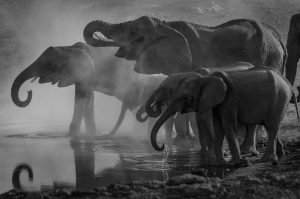In his introduction, Carl Safina writes “When a poacher kills an elephant, he doesn’t just kill the elephant who dies. The family may lose the crucial memory of the elder matriarch, who knew where to travel during the very toughest years of drought to reach the food and water that would allow them to continue living.”

The book isn’t about poaching. It is a well-researched look into how animals, primarily elephants, wolves and killer whales, communicate. Safina’s enthusiasm and curiosity are palpable throughout the book, making it an easy read.
When I started reading it, I must admit that I was worried it would be highly anthropomorphised. In fact, rather than making anthropomorphic assumptions he vigorously questions and examines his subjects’ behaviour. For example, in the chapter ‘A Perfect Wolf’, he delves into the story of Yellowstone’s legendary ‘Twenty-One’ – The wolf who never lost a fight and never killed a vanquished foe. Of this Perfect Wolf, he writes “Twenty-one’s restraint in letting vanquished rivals go free seems incredible. What could it be? Mercy? Can a Wolf be magnanimous? And if so, why?”
At the same time, it is hard not to draw any parallels with human communication and motives. He writes “Certainly, projecting feelings onto other animals can lead to us misunderstanding their motivations. But denying that they have any motivations guarantees that we’ll misunderstand it. Not assuming that other animals have thoughts and feelings was a good start for a new science.”
Although this book was published five years ago in 2015, according to me, if you work with animal welfare, conservation or just love animals, this book is a jewel. It opened my eyes to the depth, wonder and intricacies of communication amongst animals. And also, to the genuine dedication of the people who surround them and how far they’ll go to protect them.
